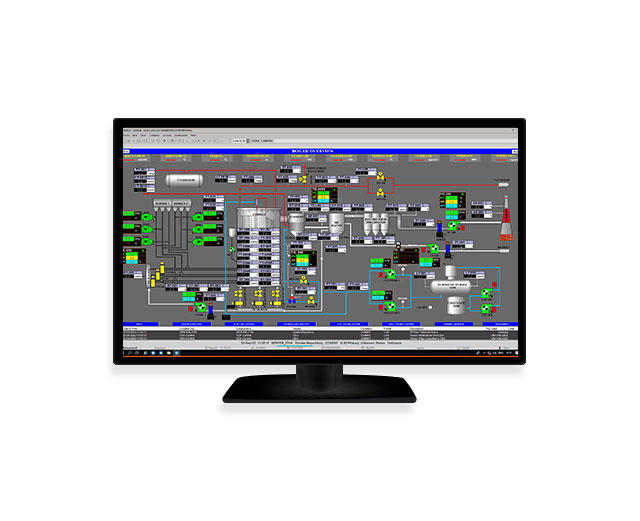Security Considerations for PLC and SCADA Systems
In today’s interconnected world, industrial processes rely heavily on Programmable Logic Controllers (PLCs) and Supervisory Control and Data Acquisition (SCADA) systems. These systems play a pivotal role in managing and controlling critical infrastructure such as power plants, water treatment facilities, manufacturing plants, and more. While they have significantly improved efficiency and productivity, they have also become prime targets for cyberattacks. In this blog post, we will delve into the security considerations for PLC and SCADA systems and explore the importance of safeguarding them against potential threats.
Understanding PLCs and SCADA Systems
Before diving into security concerns, it’s essential to have a basic understanding of what PLCs and SCADA systems are.
PLCs (Programmable Logic Controllers): PLCs are specialised control systems used to control manufacturing processes and industrial equipment. They receive input from sensors and other devices, process this data, and then make decisions to control outputs like motors, valves, and switches.
SCADA (Supervisory Control and Data Acquisition) Systems: SCADA systems are software and hardware solutions that enable remote monitoring and control of industrial processes. They collect data from PLCs and other devices, display it on operator screens, and allow operators to make informed decisions and control processes from a central location.
Now, let’s explore the critical security considerations for these systems:
1. Vulnerabilities and Threats:
PLCs and SCADA systems are not immune to cyber threats. In fact, they face a unique set of vulnerabilities due to their role in critical infrastructure. Threats can come from various sources, including malicious actors, disgruntled employees, or even unintentional errors. Common threats include:
Malware: Malicious software can infiltrate these systems, leading to data breaches, system disruptions, or unauthorised access.
Physical Attacks: Physical tampering or unauthorised access to hardware can compromise the integrity and security of these systems.
Data Manipulation: Hackers may alter sensor data or control signals, leading to incorrect decisions and potentially catastrophic consequences.
Denial of Service (DoS) Attacks: Attackers can flood the network or system with traffic, overwhelming it and causing operational disruptions.
2. Security Best Practices:
To mitigate these threats, it’s essential to implement robust security practices:
Network Segmentation: Isolating the PLC and SCADA systems from the corporate network helps prevent lateral movement by attackers.
Access Control: Implement strict access controls, including strong authentication and authorization mechanisms, to restrict system access to authorized personnel only.
Regular Patching and Updates: Keep all software and firmware up to date to address known vulnerabilities.
Intrusion Detection and Prevention Systems (IDPS): Deploy IDPS to monitor network traffic and detect unusual or malicious activity.
Security Awareness Training: Educate employees about cybersecurity best practices to prevent social engineering attacks.
Backup and Recovery: Regularly back up system configurations and data to ensure rapid recovery in case of a cyber incident.
3. Air-Gapping vs. Connectivity:
One of the central debates in PLC and SCADA security is whether to keep these systems isolated (air-gapped) or allow some level of connectivity to corporate networks. An air-gapped system is physically separated from other networks, making it challenging for attackers to infiltrate. However, complete isolation may hinder data exchange and remote monitoring capabilities. Finding the ideal balance between security and usability is essential.
4. Vendor and Supply Chain Security:
When purchasing PLCs and SCADA systems, consider the security practices of the vendors. Ensure they follow industry standards and provide updates and support for their products. Additionally, assess the security of components in your supply chain to prevent the introduction of compromised hardware or software.
5. Incident Response and Recovery:
Despite all precautions, incidents can still occur. Having a well-defined incident response plan is crucial to minimize damage and downtime. This plan should include:
Detection and Analysis: Promptly identify and analyze security incidents to determine their scope and impact.
Containment: Isolate the damaged systems to stop additional harm.
Eradication: Eliminate the incident’s primary cause, such as malware or unauthorized access.
Recovery: As soon as feasible, return regular operations to normal.
Lessons Learned: After an incident, conduct a thorough post-incident review to identify areas for improvement and update security measures accordingly.
6. Compliance and Regulations:
Depending on your industry, there may be specific regulations and compliance requirements related to PLC and SCADA system security. Familiarize yourself with these regulations and ensure that your systems meet the necessary standards and reporting obligations.
Conclusion:
In an increasingly interconnected world, the security of PLC and SCADA systems is of paramount importance. These systems control critical infrastructure and can have severe consequences if compromised. Implementing a comprehensive security strategy that includes network segmentation, access control, regular updates, and incident response planning is essential to protect these systems from evolving cyber threats. By prioritizing security considerations, organizations can ensure the reliability and safety of their industrial processes while safeguarding against potential risks.
The latest Control system with built in Cyber security features are also a great solution to be considered, Honeywell’s flagship Control Edge PLC System has inbuilt cyber security protection with Level 2 certification. This is probably the first of its kind of any automation system to have an inbuilt protection. With the wide adaptation of Industry 4.0 and cyber protection has become imperative.







